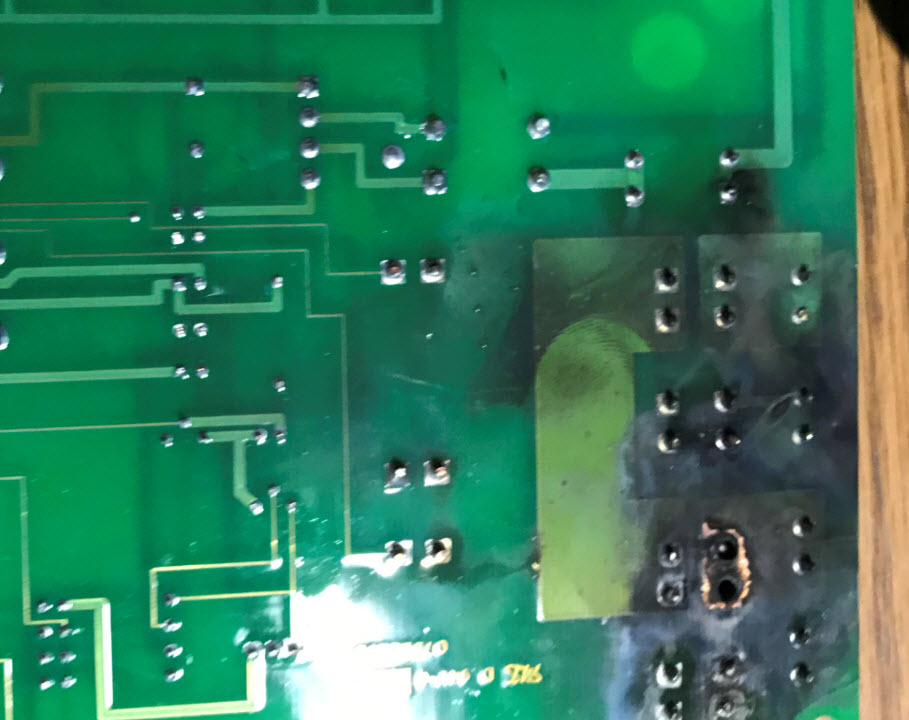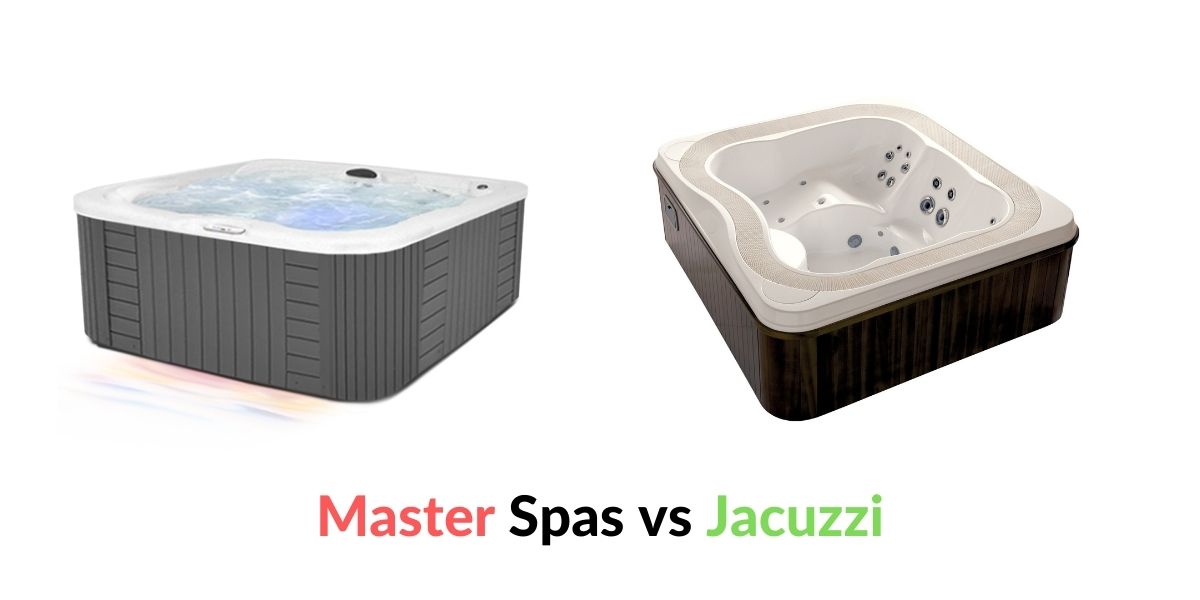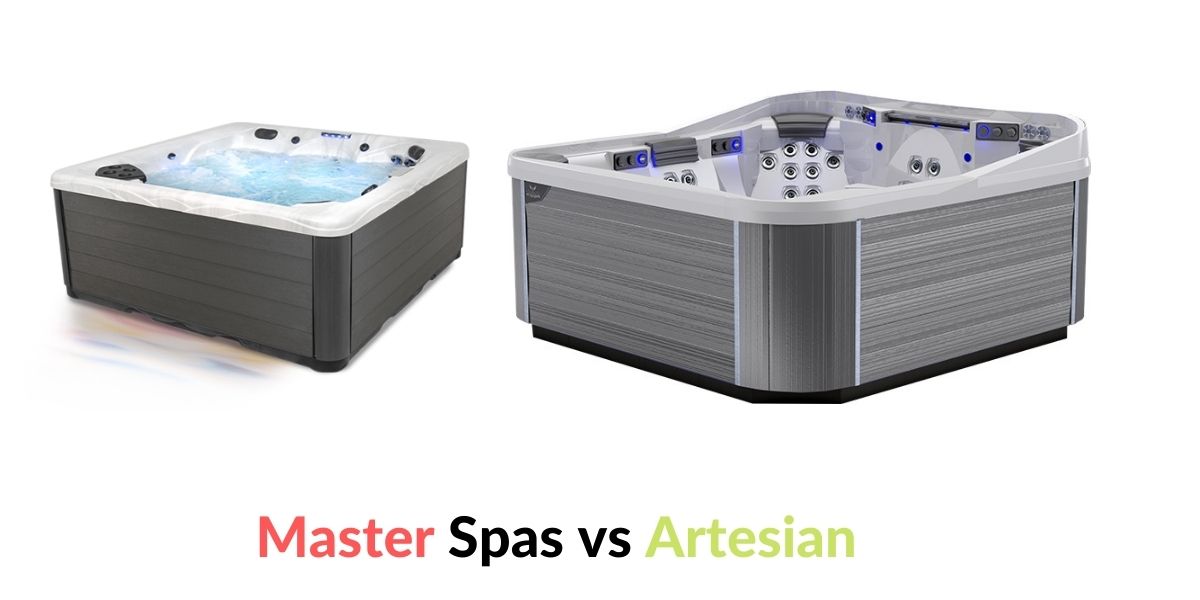Does A Hot Tub Require A Disconnect ? [2024 Requirements]
Hot tub disconnect is a requirement to those hot tubs that operate on 220 volts and require some additional electrical work in order to complete the setup. It is basically a small hot tub breaker box that’s placed on the wall within 15 feet (line of sight) from your hot tub.
So, does a hot tub require a disconnect?
A hot tub will require a disconnect in case it operates on 220 volts.
Due to the high voltage, there is a greater risk of damage. The hot tub disconnect must be a minimum of 5 feet away from the water (15 feet line of sight) and placed behind a permanent barrier.
What Is A Hot Tub Disconnect?
Hot tubs that run on 220 volts will absolutely require you to install a hot tub disconnect box. Now that we covered that, let’s answer what a hot tub disconnect really is all about?
It’s simple. A hot tub disconnect is a simple box guarding a breaker that will be used to cut the power off in case of an emergency or any failure.
The whole idea is that the 220-volt models, which are more common, require some electrical work to be done before you can use them. For these, the hot tub’s power line won’t run directly to your main hot tub breaker panel. Instead, there will be a small hot tub breaker panel just for the hot tub (disconnect).
A hot tub disconnect is a safety device that is used to disconnect the electrical power to a hot tub. The distance of the hot tub disconnect from the hot tub depends on the National Electrical Code (NEC) requirements for your area. In general, the hot tub disconnect should be located within sight of the hot tub, but no more than 5 feet away from the hot tub. This allows for easy access in case of an emergency, while still providing a measure of protection against electrical shock. The exact distance requirements may vary depending on your location, so it is important to check with your local building code or electrical code requirements for specific guidelines.
Have you gotten your hot tub accessories this year?
Honestly, when I experienced a hot tub for the first time, it was good enough for me. It hasn’t gone a lot before I thought how cool it would be to have a drink in my hot tub, watch a game or bring my food with me. I had no idea people already made things for your hot tub so you can do just that. I have a long list of hot tub accessories that might be interesting to you. Click here to read the article.
This small panel, also known as a hot tub disconnect, is usually placed near the hot tub (but not too close so it can get splashed). Then that panel gets connected to your main outdoor hot tub breaker panel.
- Homeline Spa Pack
- Outdoor 3R Steel Enclosure
- Includes HOM24L50R 50A Main Lug Load Center
- 2 Space Circuit, 4 Single Poles
- One HOM250GFICP 2 Pole 50 Amp Ground Fault Circuit Interrupter
- Ideal for outdoor use with Spas, Hot Tubs or Swimming Pools
- Siemens 60 Amp 2-pole GFCI included (QF260)
- 2 extra spaces for branch circuits
- Interiors offer removal in seconds
- UL listed on 60 degree /75 degree C conductors
How Close Can A Disconnect Be To A Hot Tub? [Location]
NEC Look up 680.41 called “emergency switch for spas and hot tubs” says:
The emergency hot tub disconnect must be at least 5 feet away and no more than 50 feet away (line of sight for a motor). It’s good to usually use a red mushroom head e-stop button.
Additionally, the motor must be GFCI protected. The hot tub disconnect should also shut off all motors associated with the hot tub.
Also, A GFCI can be no closer than 3 meters for a hot tub according to this rule 68-068(6)(c).
Second, there is no code for the best hot tub disconnect location for residential hot tubs. A lot of people will use the motor disconnect code but it says if the disconnect is lockable in the open position it does not need to be within sight. 28-604(1)(b)(ii)
Can a hot tub disconnect be 20 feet away?
It is generally recommended to locate the hot tub disconnect switch as close to the hot tub as possible. The National Electrical Code (NEC) requires that the disconnect switch for a hot tub be located within sight of the hot tub, or within 25 feet of the hot tub, whichever is less.
However, it is possible to locate the disconnect switch further than 25 feet away from the hot tub if necessary. In this case, the disconnect switch must be in a readily accessible location and clearly marked to indicate that it controls the hot tub. The exact distance requirements may vary depending on local codes and regulations, so it is a good idea to consult with a licensed electrician or building code official to determine the specific requirements for your location.
What is code for hot tub disconnect?
The National Electrical Code (NEC) specifies the requirements for hot tub disconnect switches in the United States. According to the NEC, a hot tub disconnect switch must meet the following requirements:
- It must be located within sight of the hot tub, or within 25 feet of the hot tub, whichever is less.
- It must be easily accessible and clearly marked to indicate that it controls the hot tub.
- It must be a readily accessible disconnecting means, such as a switch, circuit breaker, or fused disconnect.
- It must be capable of being locked in the “off” position to prevent unauthorized use of the hot tub.
The NEC also requires that hot tubs be supplied with electricity through a dedicated circuit, which means that the hot tub should not be connected to the same circuit as other electrical appliances or devices. This helps to ensure the safety of the hot tub and its users.
It is important to note that these are minimum requirements set by the NEC and that local codes and regulations may have additional requirements for hot tub disconnect switches. It is a good idea to consult with a licensed electrician or building code official to determine the specific requirements for your location.
How Do You Wire A Hot Tub Disconnect?
- Plan The Installation – This is a simple and important step. Your electricians will need to determine where to place the disconnect and the wires will run from the panel, through the disconnect, and into the hot tub.
- Install The Hot Tub Disconnect – The disconnect can be placed to a nearby wall or post.
- Install The Wiring And Conduit – You will typically use the conduit for any wiring that runs outside of the house.
- Test The Hot Tub Wiring Installation – The wiring can be tested in a few different ways. For this you can use a set of electrical testers to make sure the wires have no ground faults and maintain proper continuity. Additionally, you want to test each of the GFCI components as part of the process.
- Clean Up – Never leave a mess
How do I disconnect the electrical from my hot tub?
Locate the breaker switch in the electrical box and turn it to the off position. For 110V spa models, simply unplug the power cord from the wall. Note that for spas that are directly connected to the power supply, an electrician and/or spa service representative is required to safely disconnect the connection.
What are the electrical requirements for a hot tub?
Spas require a 110V or 220V power supply. If you choose a 110V model – often referred to as “plug-and-play” – you can simply plug the spa into an electrical outlet in your garden. If you choose a 220V model, you will need to work with a certified electrician to ensure that you have enough power for the spa, and the electrician will then need to run the appropriate wires from your power box to the spa. Your dealer can help you understand the pros and cons of both electrical configurations and explain the specific electrical requirements of the model you choose.
What Is The 6 Disconnect Rule?
The rule of 6 swipes of the hand for a service has stopped working in 2020. It is shown that there are ways to have more than one disconnect for a service but the days of having a panel board with 6 swipes of the hand is now gone when you adopt the 2020 NEC.
Before, the 6 disconnect rule meant six disconnecting for each service, not six service disconnecting per building. If the building has two services, you can have a total of 12 service disconnects (six disconnects per service).
How Far Away Does A GFCI Have To Be From A Hot Tub? [Location]
It should not matters how far it is away for false tripping. What it matters is what the code is on that’s the farthest it can be away. In most of the states it’s not greater than 25 feet away. You should look up local code to determine the right distance.
For example, CEC states minimum 3 meters away from you spa but it does not need to be in line of sight and there is no maximum distance as well. This is what you could read in section 68 of the code.
What would cause a breaker to randomly trip?
There are several possible reasons why a breaker might trip randomly:
- Overloaded circuit: If a circuit is overloaded with too many appliances or devices, it can cause the breaker to trip. This is a safety feature to prevent fires or other damage from occurring.
- Electrical short circuit: If there is a short circuit somewhere in the electrical system, it can cause the breaker to trip. A short circuit occurs when there is a direct connection between the hot wire and the neutral wire, allowing electricity to flow through an unintended path.
- Electrical grounding issue: If there is an issue with the electrical grounding in the circuit, it can cause the breaker to trip. This is a safety feature to prevent electrical shock.
- Damaged wiring: If the wiring in the circuit is damaged, it can cause the breaker to trip. This could be due to physical damage to the wires, or it could be due to corrosion or other issues.
- Malfunctioning appliance: In some cases, a malfunctioning appliance or device can cause the breaker to trip. This could be due to a problem with the appliance itself, or it could be due to a problem with the electrical outlet it is plugged into.
If you are experiencing a breaker that is tripping randomly, it is important to have it checked by a licensed electrician. They will be able to diagnose the problem and recommend a solution.
Should I be worried if my breaker keeps tripping?
If your breaker is tripping frequently, it is a good idea to be concerned. This is usually a sign of an underlying problem that needs to be addressed. If the breaker continues to trip, it can cause damage to your electrical system and appliances, and it can also be a safety hazard.
There are several possible reasons why a breaker might trip frequently:
- Overloaded circuit: If a circuit is overloaded with too many appliances or devices, it can cause the breaker to trip. This is a safety feature to prevent fires or other damage from occurring.
- Electrical short circuit: If there is a short circuit somewhere in the electrical system, it can cause the breaker to trip. A short circuit occurs when there is a direct connection between the hot wire and the neutral wire, allowing electricity to flow through an unintended path.
- Electrical grounding issue: If there is an issue with the electrical grounding in the circuit, it can cause the breaker to trip. This is a safety feature to prevent electrical shock.
- Damaged wiring: If the wiring in the circuit is damaged, it can cause the breaker to trip. This could be due to physical damage to the wires, or it could be due to corrosion or other issues.
- Malfunctioning appliance: In some cases, a malfunctioning appliance or device can cause the breaker to trip. This could be due to a problem with the appliance itself, or it could be due to a problem with the electrical outlet it is plugged into.
If your breaker is tripping frequently, it is important to have it checked by a licensed electrician. They will be able to diagnose the problem and recommend a solution.
What Size Breaker Do I Need For A 220v Hot Tub?
According to NFPA 70 of the National Electrical Code, #8 TW copper is good for 40 amps, and #6 TW copper is good for 50 amps.
It might be possible to use #8, and probably not have any issues in the near future.
The problem is that TW wire, which is what you would be using in a house, is rated for 75*c.
What happens over time is the wire will be heated and cooled many times, and then the insulation becomes brittle and cracks and falls off.
If you consider the same load, then #8 will become hotter than #6. You don’t want to have a fire in 20 years from now simply because you chose #8 today.
What happens, in reality, is that there is a certain drop in load-carrying ability in all wire and 65 feet is a good size run. It is extremely difficult to accurately calculate the load carrying drop, even today.
So in the end, while it may be slight over kill to run #6 it could be slight under kill to use #8.
How Much Does It Cost To Wire For A Hot Tub?
There a few things to consider:
- First off, the distance you would have between your panel and the hot tub is not generally equal to the length of wire you will need, and remember that this cable is not cheap.
- Think is the cable is capable of handling the load you can expect to have in the future.
- What’s the amperage / wattage or your new hot tub? Could you expect to upgrade that in the future to hold more people?
- Do you require the cabling to go under ground?
- You will also need to run the ESA electrical inspection and apply for permit.
- It is possible that you will need a disconnect and a GFCI hot tub breaker.
Generally, these projects run from $1,500 to $3,000 depending on what you will need to do.
Your best bet is to search for contractors in your area and try to get 3 to 4 quotes before you hire the right one.
Do You Know How Much Does It Cost To Run Your Hot Tub Monthly?
I have full research on water and electricity prices based on where you live that reveals how much you and people around you will spend on their electricity/utilities bill each month as well as other averages. You can read that article here.
How Does A 240v GFCI Hot Tub Breaker Work Without A Neutral?
Thing to remember is that the 240 volt generally comes from two 120 volt lines. These two lines are 180 degrees out of sync. Think +120 and -120 volt at the same time. This is equal to 240 volt.
The GFCI is a device that will be on a lookout for any imbalance. So any stray voltage will trip the hot tub breaker.
Think of a balance scale. The principle is the same, as long as you add or subtract the same amount from both sides, it will stay in balance. However if you spill a little and it goes out of balance. This is the reason the neutral will need to be connected to the GFCI breaker. It will help monitor this imbalance.
A shared neutral will tend to trip the hot tub breaker.
Another important thing to mention is that a two-pole GFCI and the neutral run through the transformer. It is possible to split current in any fashion between the three conductors because it will still cancel out if there’s no leakage to ground.
If the neutral isn’t connected at all, then that wire is basically ignored by the transformer (there will never be any current there) which results in having the current between the two hots being compared.
How Do You Wire A 220v 3 Wire For A Hot Tub?
According to the NEC book and some electricians they say to use an insulated ground (that would be the green wire).
Many professionals agreed that 6/3 UF/G was perfectly acceptable for a spa installation. This assumes that the ground is exactly that; a direct connection to ground. This means if you have a bare wire it simply is more likely to ground rather the insulated.
There are other regulations about wiring that might affect you depending on your installation.
Why Does A Wire Get Hot?
Sometimes you can feel that your wires are getting too hot, and you would probably be right. There are a few reasons for that:
- Loose wire
- Possible load problem
- Bad main hot tub breaker
- Heavier load on that pole
It could also be that there is no problem at all.
If that breaker is 110-115F, in some parts of the country the ambient air could be hotter than the terminal. Yes, it might be hotter than ambient but that doesn’t necessarily mean a problem. Most wire today will be rated at 90C or about 150F. Most of regular hot tub breakers are rated to operate in 140F ambient air.
Do I Need A Service Disconnect ?
Part VI article 230.70 has the requirements for service disconnects, the requirement for one outside of the structure may be a local amendment to the NEC.
NEC says outside or “inside nearest the point of entrance of the service conductors”. The nearest point inside will be determined by your local AHJ, It is best to ask them to interpret if you need a service disconnect or not.
What Is The Difference Between Hot Tub Disconnect Switch And Circuit Breaker?
- A disconnector or isolator is designed to disconnect a cable/load from a source supply so it can be safely worked on.
- A circuit breaker, on the other hand is designed to definitely open and disconnect the cable/load when passing normal or fault currents.
Can I Plug My Hot Tub Into A Regular Outlet ?
In order for a tub to run on 15 amps (regular outlet) it has to be limited to 1000 watts of heating power and a 1 HP pump motor or less.
Some of our smallest hot tubs can be plugged into a 15 amp outlet, and because of their small size they work very well.
Yes, the limitations are true and they exist: longer heat-up after water changes, which may not stay hot as long when the cover is off in very cold climates, or no heat when the jets are on, and so forth.
To the outlet in question, you can do this to test how much your system can endure.
- Plug in a blow drier and turn it on high.
- See if that will trip the breaker. If it doesn’t do the next thing
- Go to the panel and start switching off breakers (good idea to shut down your computer first) and wait until the thing goes silent.
- Make a note of what breaker it is on.
- Now turn all the other ones back and leave the hot tub breaker off
- It really should be a 20amp breaker. Don’t let this be confusing to you, but long term, your hot tub should run on a 20a breaker.
- Now, turn it on and start turning on other devices. If you manage to trip the breaker, you know you have overloaded it.
- Then you can try to make an educated guess whether you can make it work or not. An example of what would not work is if the refrigerator was on the same circuit as the out door plug.
Again, when it comes to your safety, have a licensed electrician come and confirm your educated guess.
Does Hot Tub Wiring Need To Be In Conduit?
Yes, it needs to be in the conduit. And it is not a bad idea in case you want to lay the conduit sooner than later. Planning ahead might save digging up a lot of lawn and landscape.
It isn’t recommended to go deeper than 1″ depending on the length of the run and how many turns you will need to make. Getting a string through the conduit is easy.
After that, in order to get the wire through, first get a piece of cloth and tie it to an end of a string. Then use an air compressor to push or suck the cloth with the string. After that tie the wire to the string and pull through the conduit.
The wire size will depend on the current and the length of the wires. You should be talking to someone who will be hooking your hot tub up eventually and ask them what they would suggest in terms of a conduit.
Do Hot Tubs Need A Ground Rod?
No. Grounding (earthing) of electrical equipment doesn’t provide a low-impedance fault-current path to clear ground faults (in order words: “lower” voltages don’t travel freely, through the surface of the earth).
According to the NEC, code prohibits the use of the earth (aka grounding rod) as the sole return path because it’s a poor conductor of current at voltage levels below 600V [250.4(A)(5) and 250.45(B)(4)].
In reality what this would do is potentially electrify the ground around the hot tub and has the potential of electrocuting you as well. Imagine if you were to be standing on the ground and touch something that is properly grounded you could be fatally electrocuted.
Know that electricity in the electrified ground travels up through you and out to what you are touching, assuming it is properly grounded.
The main electrical panel is the only place where grounding through a grounding rod should be done (I am talking about the main panel, not sub panel).
The purpose of a main electrical panel being grounded through a grounding rod is to limit the voltage imposed on the whole electrical system by lightning, unintentional contact with higher-voltage lines, or line surges.
Why Does My Hot Tub GFCI Keep Tripping?
I can share an example and maybe this can help you.
The GFCI breaker tripped instantly when I tried to power up my hot tub. They knew it wasn’t the heater. The assumed it was the board. Then they put in a new Balboa spa pack and the GFCI still tripped.
They then put in a new GFCI breaker and that one tripped too.
Then they put in a non GFCI (for testing only) and it suddenly worked. After contacting Balboa support and the tech told them that the most common cause is incorrect GFCI breaker installation.
You want to make sure the white common/neutral power wire that goes through to the spa pack is in the breaker itself, and not the bus bar that the white and ground from the main panel are in.
How Far Should A Hot Tub Be From The House?
A lot of people try to place the hot tub right against the exterior wall of the house. They think that by doing so they could increase the heat retention which is somewhat accurate statement.
However, does your house have gutters? Did you notice if the rain is dripping of the edge of the roof, because it can drip onto the cover of your hot tub, and also into the “engine” (motor, pump, etc.). These are some of the main reasons people don’t have their hot tubs close to their house.
If, after all, you still want to put it against your house, and there is dripping off of your roof, I would at least advise on having the control side of the tub away from the house.
And what about the snow and icicles during winter? If you’re in a cold climate, these can make a substantial damage to your cover and create a hazard for winter hot-tubbing.
Can I Use A 50 Amp Breaker For A 40 Amp Hot Tub?
You should not do that. Jacuzzi for example states a 40amp breaker for your model. It is recommended to follow their guidelines. Your hot tub will run with a 50amp breaker. However, you could do some major damage to the spa if something would go wrong long before the breaker would trip.
Is It Dangerous When A Plug Gets Hot?
Generally, yes. However, you have to know if it is a 110 volt hot tub plug or 220 volt. Plugs could get hot due to decrease in voltage, meaning that you are not supplying enough voltage to the hot tub so your spa needs to draw current from it.
This would be specific if you would be using an extension cord with a normal outlet.
A lot of spas are 110 volts. Some have a 20a plug, which cannot plug into a normal outlet.
One thing you don’t want to use is an extension cord, and here is why. You will hear many manufacturers advising against this, partially due to the potential hazard of burning everything down. They will also cancel your warranty.
Let me explain what happens when you use an extension cord. The conductors will supply current, but for every foot of cord, there is resistance. This will cause a decrease in voltage and will cause the spa to draw more current.
Doing this can cause damage to your heater, control board, even the pump motor by trying to run it on the lower voltage.
Another reason not to use an extension cord, even with a plug and play inflatable hot tubs, is the danger that comes with a non-weather proof connection, and known water/electricity issues.
When you plug your hot tub into the remote wall outlet, then the wiring behind it is supposed to be efficiently sized to handle the voltage for all the devices in your household and it will keep you away from water at the same time.
What Causes A Ground Wire To Melt?

If you get into a situation where your hot tub is heating properly to the 104 F but keeps burning (melting) wires randomly then here are a few things you should check that usually gives the good result:
- Make sure that the wire is big enough to support the current/voltage
- Make sure that the wire is thightened properly.
- Make sure that the wire is not damaged. If there is any tape around it, rip it off and check the wire condition.
- Check the condition of relays. Sometimes they can melt too
The reason those particular wires can get overheated and eventually melt is because that spot happens to be the weakest spot in that circuit. What happens is that the same load is being carried everywhere along the circuit.
The circuit is expected to be able to transfer the amperage along the line. On the micro-level, you have electrons that are moving back and forth creating friction as they try to carry that amperage along a line that’s too small or its capacity is reduced by any of the aforementioned reasons.
How Do You Fix A Burnt Wire?

Use a new wire, that does not have any damage to it, and make sure it is large enough and tighten the connections. The problem should disappear.
Use a new wire, with no damage, that’s large enough, and tighten the connections, and the problem will vanish. Unless overheating has damaged the lugs on the heater relay- which can eventually overheat and melt, as well as the heater element terminals.













